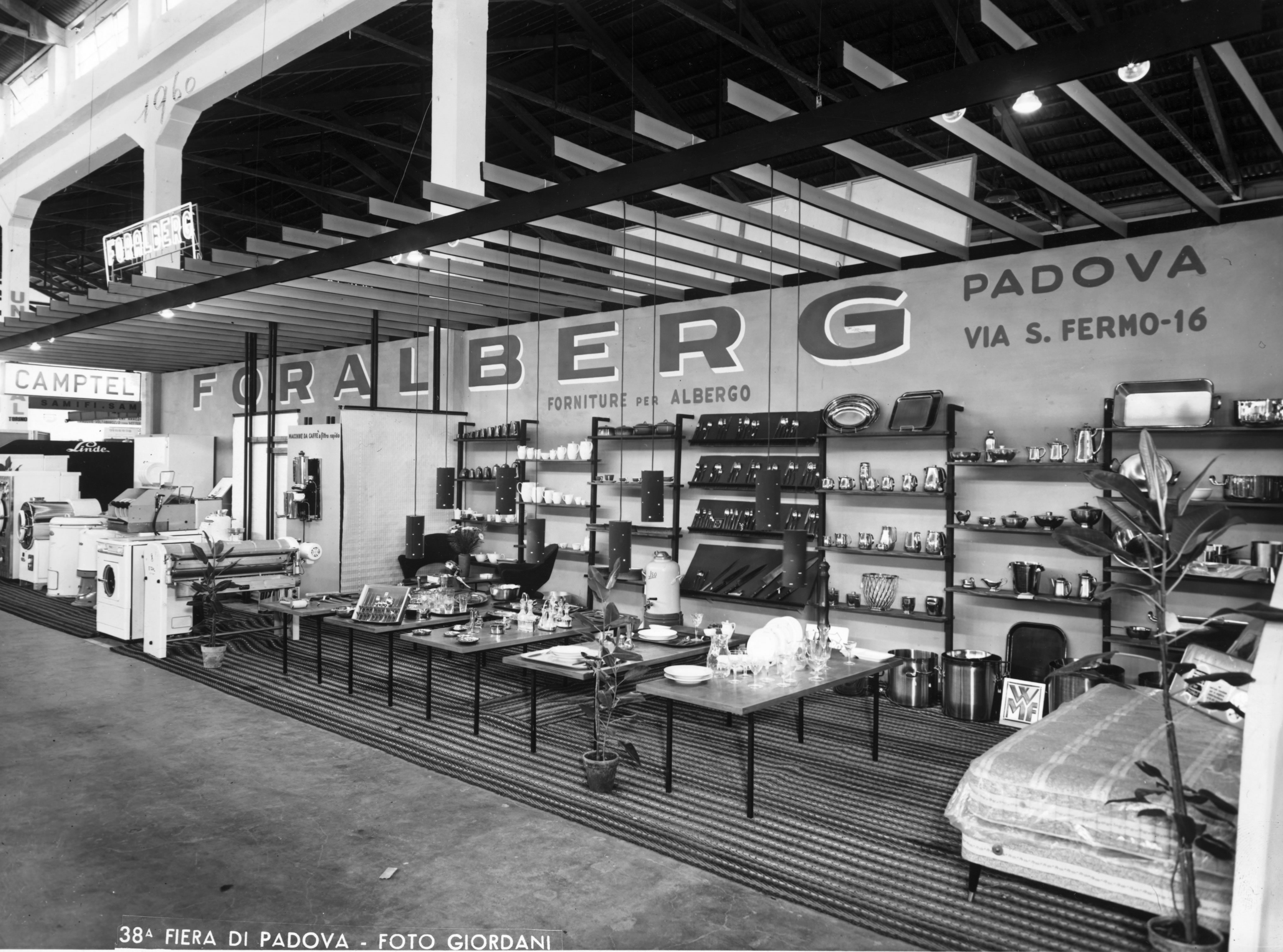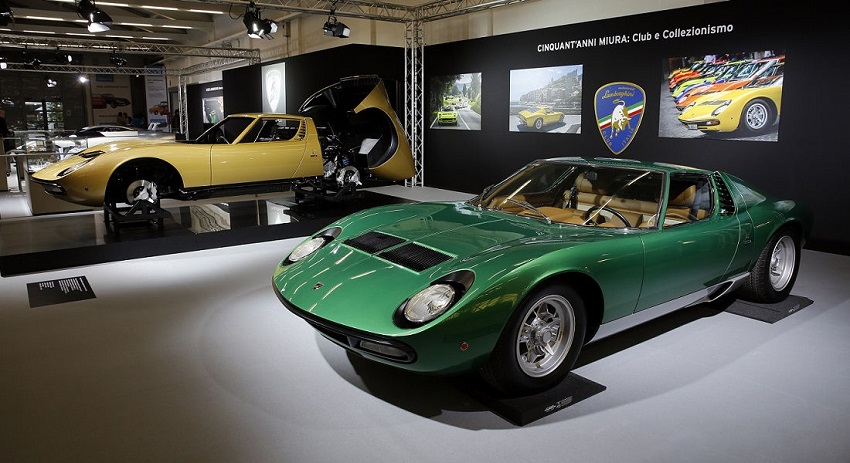




The Padua Fairs (Fiera di Padova) is a functional complex and ideal for hosting any type of event.
For professionals but also visitors, PadovaFiere promotes events and events of great interest and multiplies the opportunities for meeting and business of the stakeholders involved. not only: it is a perfect place to host institutional meetings and conferences.
The added value is given by the multitude of people who work within the fairgrounds, a specialized and highly qualified team to make every event worthy of note.

In search of the origins of the Fiera di Padova you can run back to the early Middle Ages, to the Fiere di San Prosdocimo and Santa Giustina, saints in vogue at that time until the arrival of Sant'Antonio in 1232. From here, from domination in domination, the Fair of the Holy arrives undamaged to 1919 wars allowing.

A qualitative leap will bring the Fiera di Padova from Prato della Valle, the second largest European square, to the warehouses of Via Tommaseo, with a stable structure and organization.

HISTORY
Already in the most ancient times, with limited routes and means of transport, the Fiera's horizon looked to the northeast. This vocation of wide-ranging initiative has accompanied her up to the present day, and perhaps precisely because it has been stimulated by many nearby realities, the Paduan Fair has always stood out in the original initiatives, in the novelties. In the XVI century the Fair took place in the square of the Basilica of Sant’Antonio. The rulers decided, with the permission of the Doge, to incorporate the whole area of ​​the Prato della Valle, an area of ​​100,000 square meters as wide as the current district, into the exhibition space.
Two centuries later Andrea Memmo arranged the Prato della Valle, building an original monumental structure that was supplemented by 56 removable wooden shops, built by the architect Domenico Cerato. These are the first exhibition stands.
On October 6, 1775, the new Fiera del Santo is inaugurated: by decree of the Veneto Senate it is proudly frank, that is, no duties are paid, and in the shops the most "prestigious" goods are exhibited.
The formula is already that of a fair today. The nineteenth century, and the early twentieth century, saw a considerable number of initiatives concentrated in Padua. In 1846 the "1st Exhibition of Plants and Flowers" organized by the refined "Garden Promoting Society" takes place in the Botanical Garden.
It is not the modern Nursery Show, but it is still an important step. Another innovative formula for Italy is the "exhibition congress", experimented in Padua in 1900 with the "1st International Automobile and Accessories Fair" which sees the most important brands compete in this field: among these Bugatti, Isotta Fraschini, Fiat.

The last great "pre-sample" initiative is the Pontevigodarzere Exhibition ", just outside Padua, where 500 exhibitors from all over the Veneto, Friuli Venezia Giulia, Milan, Rome, Sampierdarena and Paris, have 25,000 square meters of industrial production and 55,000 of agricultural production. In short, the whole north-east seemed to want to push Padua into new initiatives.
The organization in 1919 of the First Trade Fair in Italy is therefore not so striking. The identification of this new exhibition formula, the Campionaria, does not hold back the imagination of Paduan promoters. With the establishment of the "stable" Fair, the vivacity and the number of proposals grow.
The 1919 Campionaria, the first one, with the city damaged by the first war, distributed the exhibition between Foro Boario, Sala della Ragione, which the people of Padua always called "salon", Pietro Selvatico school. Illustrious Visitor S.M. King Vittorio Emanuele III, who pronounces a "historic" sentence to the proposal to build the new Fair: "We need to find the ground immediately. It will have to be great ".

In 1921 the new headquarters, which is then that of today, was ready. The Campionaria of 1920 is greeted by a concert by Arturo Toscanini. Growing up of the orchestra: and the prestige of the event that arouses clamor in Italy and abroad is growing.
In 1923 both Mussolini and Vittorio Emanuele III visit the Padua Fair: separately, according to use.
In 1929 the first used vehicle market was held: great success and replication in the following years. From 1930 the Padua Fair became the regime's fair: hard-working and self-sufficient.
In the same year the Fair is also the site of the First International Modern Christian Sacred Art Exhibition ", with a certain timing given that only the year before the Lateran Pacts were signed.
At the Fair there is not only the economy. In 1935, an important film exhibition was held at the Fair with 1,072 screenings and 250,000 visitors. After years of lively initiatives, the war interrupts every activity.
In 1943 the Fair was destroyed by a bombing, and after a pause the reconstruction began.

After the first post-war period, the following years are those of the specialized exhibitions that Padova intends as a future in the exhibition activity. Finally, technical conferences, then initiatives in the field of the Campionaria, the first sectors begin to break away in autonomous exhibitions. The Cold, the Packaging, the Public Services, the Internal Transports, become the specialized ones on which a more modern fair activity will be built.

 Today the Fiera di Padova is a professional activity, operators, specialized initiatives: in its history and in its daily life, the fascination of an adventurous past remains, the will to anticipate, to launch new reviews, to try new formulas for meeting and work.
Today the Fiera di Padova is a professional activity, operators, specialized initiatives: in its history and in its daily life, the fascination of an adventurous past remains, the will to anticipate, to launch new reviews, to try new formulas for meeting and work.
Transformed into a SPA in 2002, once again in Italy, PadovaFiere moved into an effective private dimension in 2005, with the acquisition of a majority stake by the French multi-national GL Events, following European legislation but above all market signals .
Padua Fairs
Address: Via Niccolò Tommaseo, 59, 35131
Phone: 049 840111
Site:
http://www.padovafiere.it/Location inserted by
Sabrina Moscatelli